


C57BL/6-Fcgrtm1(FCGR2A)Bcgen/Bcgen • 112051
| Product name | B-hCD32A mice |
|---|---|
| Catalog number | 112051 |
| Strain name | C57BL/6-Fcgrtm1(FCGR2A)Bcgen/Bcgen |
| Strain background | C57BL/6 |
| Aliases | CD32, FCG2, FcGR, CD32A, CDw32, FCGR2, IGFR2, FCGR2A1, FcgammaRIIa |
Gene targeting strategy for B-hCD32A mice.
The regulatory region and exons 1-5 of mouse Fcgr3 gene that encode the full-length protein were replaced by human FCGR2A exons 1-7 and regulatory region in B-hCD32A mice.

Strain specific CD32A expression analysis in wild-type C57BL/6 mice and homozygous humanized B-hCD32A mice by flow cytometry. Splenocytes (A) and blood cells (B) were collected from wild-type C57BL/6 mice (+/+) and homozygous B-hCD32A mice (H/H), respectively, and analyzed by flow cytometry with species-specific anti-mCD16 antibody and anti-hCD32A antibody. mCD16 was not detectable in T cells of wild-type C57BL/6 mice. hCD32A was not detectable in T cells of homozygous B-hCD32A mice.
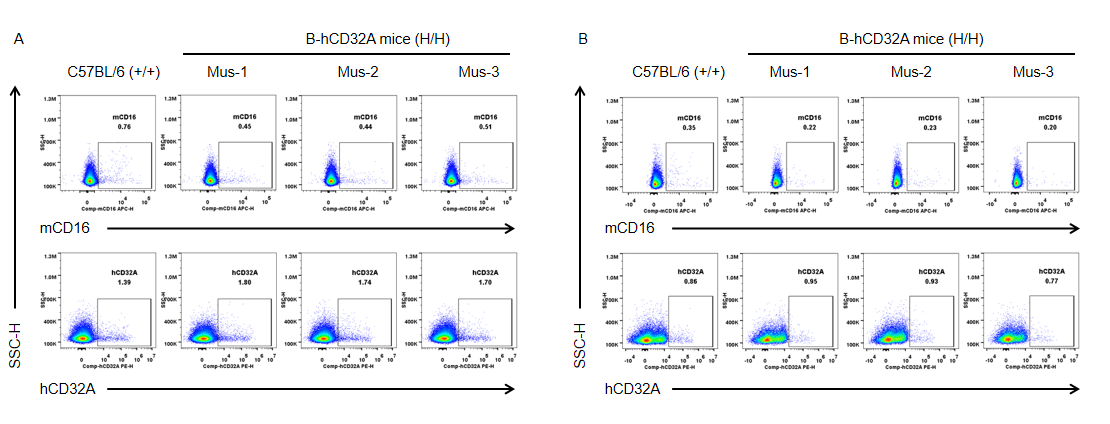
Strain specific CD32A expression analysis in wild-type C57BL/6 mice and homozygous humanized B-hCD32A mice by flow cytometry. Splenocytes (A) and blood cells (B) were collected from wild-type C57BL/6 mice (+/+) and homozygous B-hCD32A mice (H/H), and analyzed by flow cytometry with species-specific anti-mCD16 antibody and anti-hCD32A antibody. mCD16 was not detectable in B cells of wild-type C57BL/6 mice. hCD32A was not detectable in B cells of homozygous B-hCD32A mice.
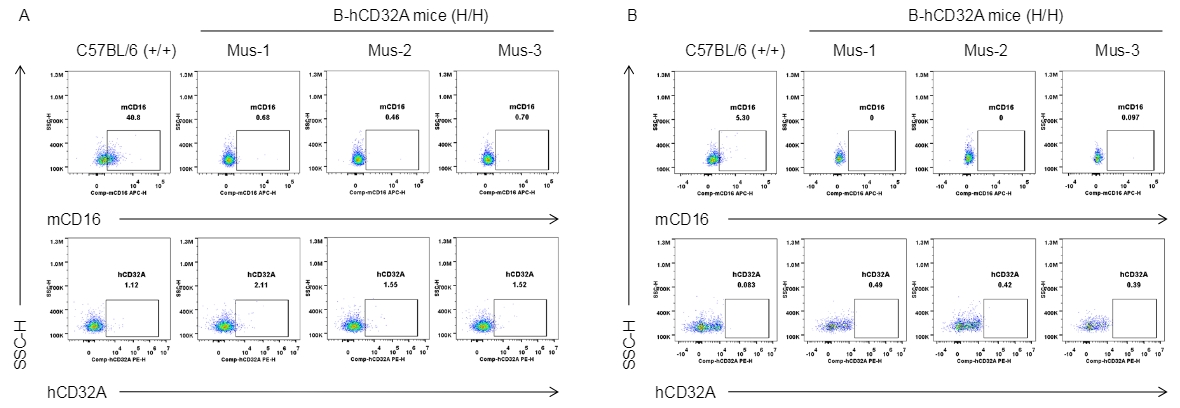
Strain specific CD32A expression analysis in wild-type C57BL/6 mice and homozygous humanized B-hCD32A mice by flow cytometry. Splenocytes (A) and blood cells (B) were collected from wild-type C57BL/6 mice (+/+) and homozygous B-hCD32A mice (H/H), and analyzed by flow cytometry with species-specific anti-mCD16 antibody and anti-hCD32A antibody. mCD16 was detectable in NK cells of wild-type C57BL/6 mice. hCD32A was not detectable in NK cells of homozygous B-hCD32A mice.
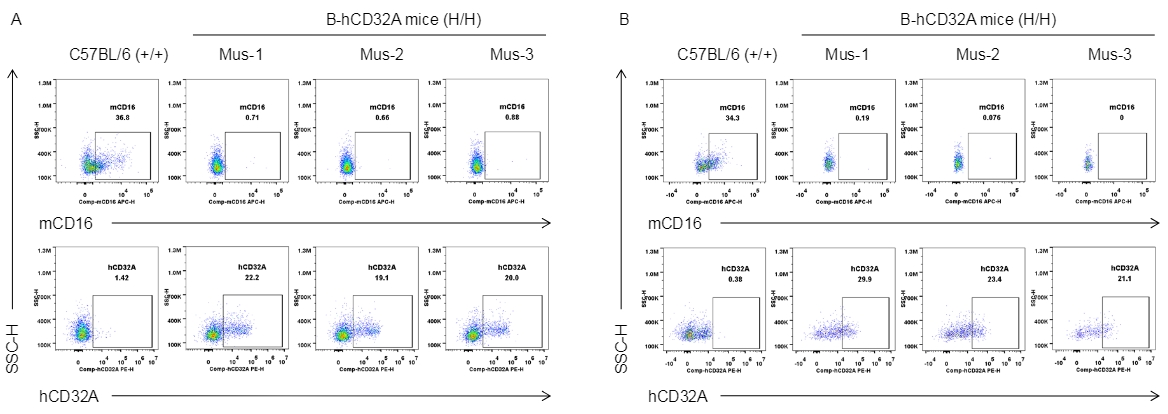
Strain specific CD32A expression analysis in wild-type C57BL/6 mice and homozygous humanized B-hCD32A mice by flow cytometry. Splenocytes (A) and blood cells (B) were collected from wild-type C57BL/6 mice (+/+) and homozygous B-hCD32A mice (H/H), and analyzed by flow cytometry with species-specific anti-mCD16 antibody and anti-hCD32A antibody. mCD16 was detectable in DC cells of wild-type C57BL/6 mice. hCD32A was detectable in DC cells of homozygous B-hCD32A mice.
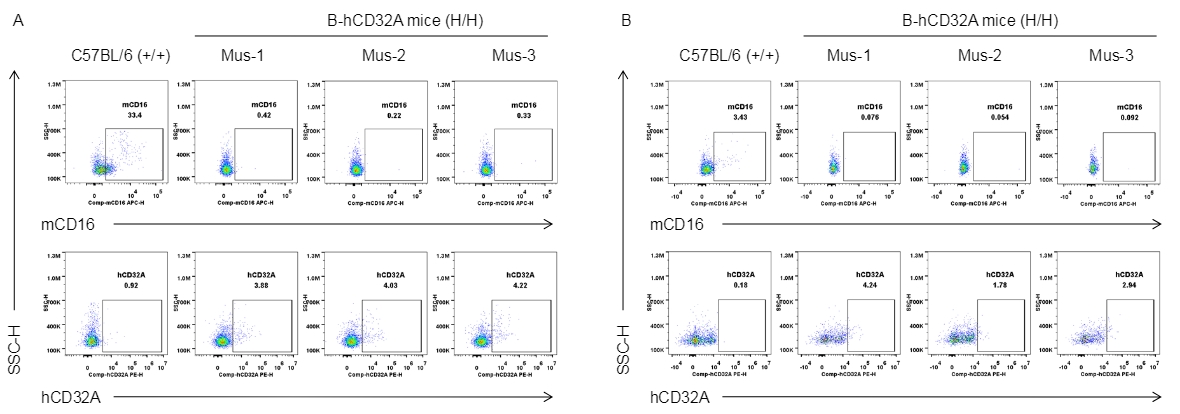
Strain specific CD32A expression analysis in wild-type C57BL/6 mice and homozygous humanized B-hCD32A mice by flow cytometry. Splenocytes (A) and blood cells (B) were collected from wild-type C57BL/6 mice (+/+) and homozygous B-hCD32A mice (H/H), and analyzed by flow cytometry with species-specific anti-mCD16 antibody and anti-hCD32A antibody. mCD16 was detectable in monocytes of wild-type C57BL/6 mice. hCD32A was weakly detectable in monocytes of homozygous B-hCD32A mice.
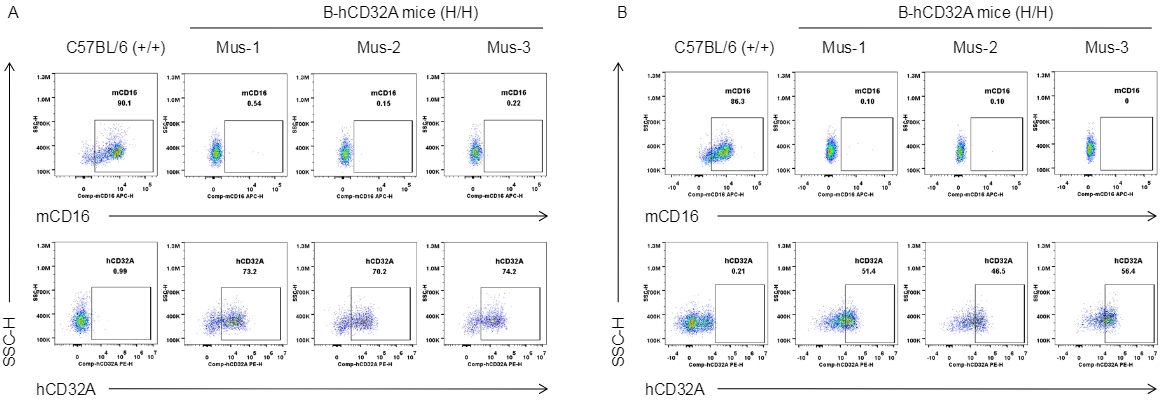
Strain specific CD32A expression analysis in wild-type C57BL/6 mice and homozygous humanized B-hCD32A mice by flow cytometry. Splenocytes (A) and blood cells (B) were collected from wild-type C57BL/6 mice (+/+) and homozygous B-hCD32A mice (H/H), and analyzed by flow cytometry with species-specific anti-mCD16 antibody and anti-hCD32A antibody. mCD16 was detectable in macrophages of wild-type C57BL/6 mice. hCD32A was detectable in macrophages of homozygous B-hCD32A mice.
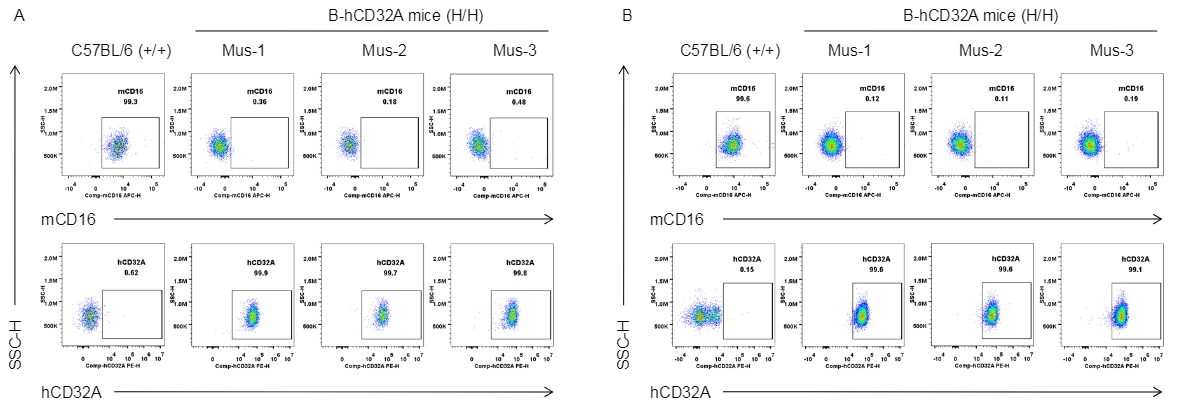
Strain specific CD32A expression analysis in wild-type C57BL/6 mice and homozygous humanized B-hCD32A mice by flow cytometry. Splenocytes (A) and blood cells (B) were collected from wild-type C57BL/6 mice (+/+) and homozygous B-hCD32A mice (H/H), and analyzed by flow cytometry with species-specific anti-mCD16 antibody and anti-hCD32A antibody. mCD16 was detectable in neutrophils of wild-type C57BL/6 mice. hCD32A was detectable in neutrophils of homozygous B-hCD32A mice.
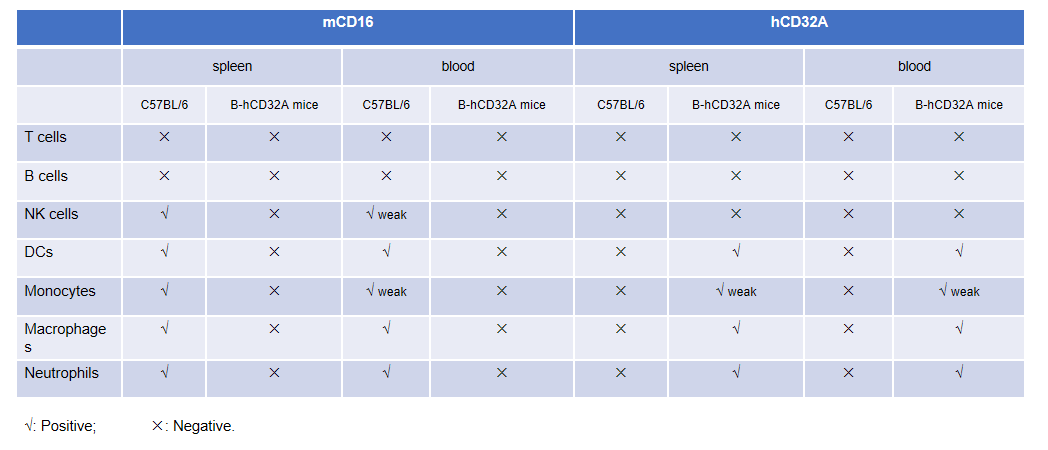
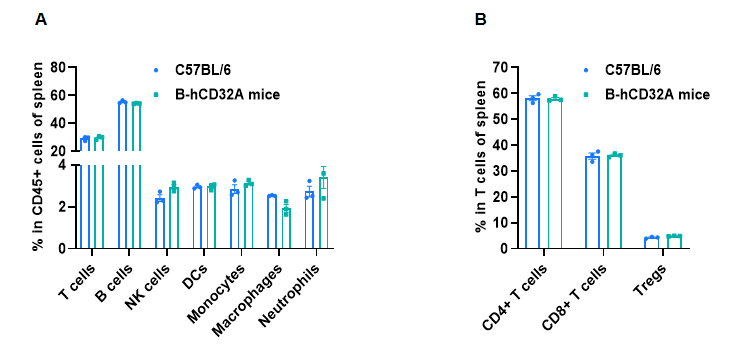
Frequency of leukocyte subpopulations in the spleen by flow cytometry. Splenocytes were isolated from wild-type C57BL/6 mice and homozygous B-hCD32A mice (n=3, 7-week-old). A. Flow cytometry analysis of the splenocytes was performed to assess the frequency of leukocyte subpopulations. B. Frequency of T cell subpopulations. Percentages of T cells, B cells, NK cells, dendritic cells, granulocytes, monocytes, macrophages, CD4+ T cells, CD8+ T cells, and Tregs in B-hCD32A mice were similar to those in C57BL/6 mice, demonstrating that humanization of CD32A does not change the frequency or distribution of these cell types in the spleen. The frequency of leukocyte subpopulations in lymph nodes and blood of B-hCD32A mice was also comparable to wild-type C57BL/6 mice (Data not shown). Values are expressed as mean ± SEM. Significance was determined by two-way ANOVA test. *P < 0.05, **P < 0.01, ***p < 0.0001.